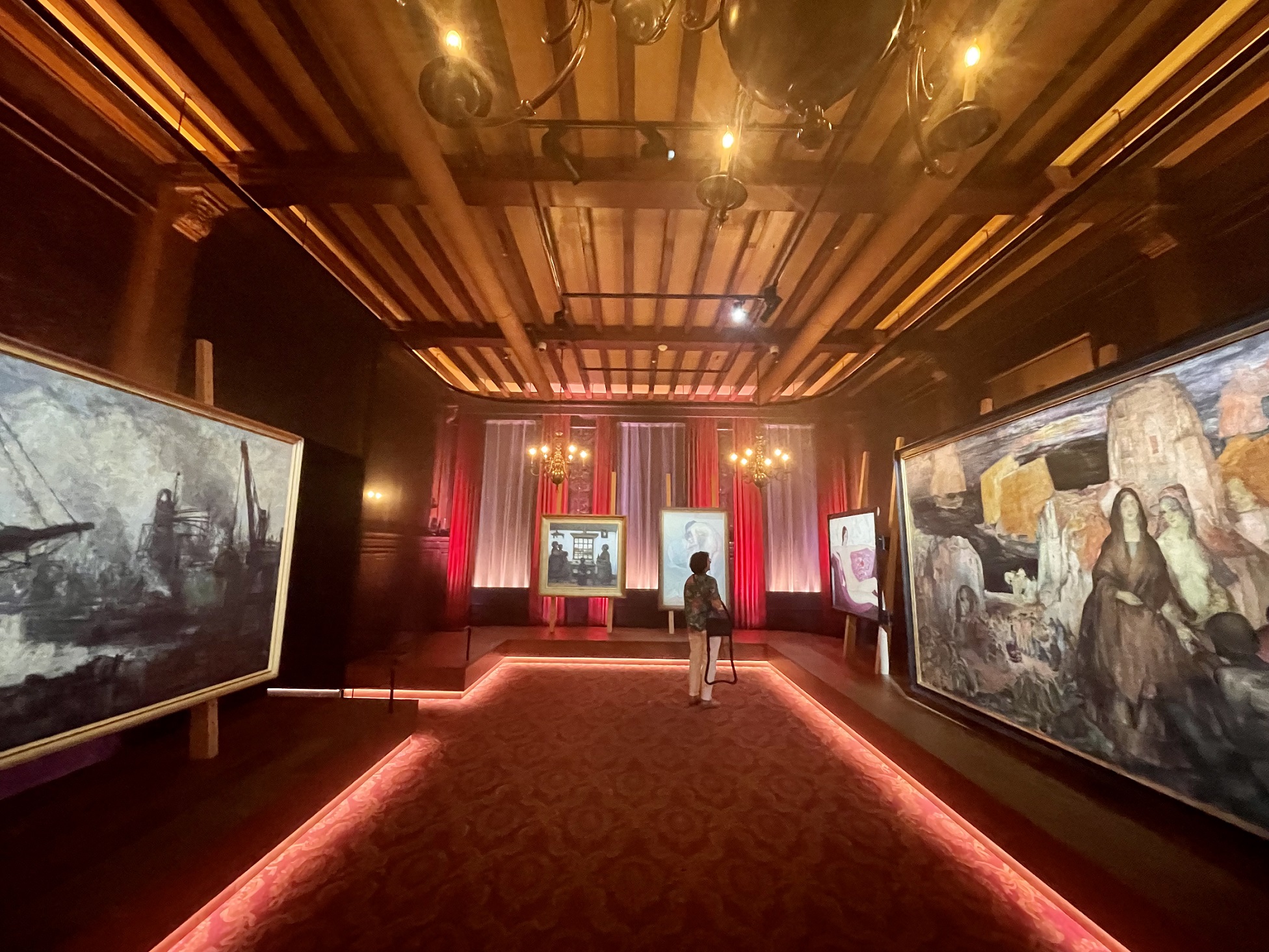Mechelen, Hasselt and Roeselare do not boast fine art museums, but they now have temporary exhibitions that arguably do more.
Thanks to a new initiative, masterpieces by Belgian painters, such as René Magritte, James Ensor, Paul Delvaux, Rik Wouters, Constant Permeke and Jean Brusselmans, are on display in heritage buildings in the centre of these cities. And they are being explained to audiences through special one-hour storytelling sessions.
Named Het Kunstuur, or The Art Hour, it not only showcases the art but tells the stories behind the paintings. “This is a private initiative that we started as a hobby, but it got out of hand,” laughs Joost Bourlon, co-founder with brother Hans Bourlon. “We put four ingredients together: paintings, professional lighting, storytelling and music and these ingredients make one hour an experience. It's not a traditional museum visit.”
With about two minutes per painting, Het Kunstuur presents the artwork’s backstory, sometimes complemented by a tale of a famous Fleming that relates to it. For example, Prime Minister Alexandre De Croo, former pro cyclist Tom Boonen and UNICEF ambassador Kristel Verbeke discuss family ties, poverty and the Tour of Flanders, respectively, in connection to artworks.
About 30 paintings are featured per exhibition in three dark rooms. One by one, the paintings are illuminated by spotlights to reveal their details. Video cut-outs of Flemish celebrities and other visual effects add to it. Only eight people are allowed per time slot every 20 minutes.
“I travel a lot for my company and when I'm in one or another city, I always see if I have time to visit a museum,” says Hans Bourlon, CEO of Studio 100, Belgium’s largest television production company. “And often I have just one hour. In huge museums with 2,000 paintings, you have a kind of stress to make choices. Kunstuur is a solution for that.”
Most people in a museum or exhibition spend just two to three seconds on each painting, rarely understanding it, Hans adds. “Every painting or painter has a story, which can be combined with a story of someone else, to make you look more carefully,” he says.
Making art relatable
Het Kunstuur stories reflect individual or societal challenges of the 19th and 20th centuries, with paintings grouped around different themes such as child labour and contrasts like war and peace or poverty and wealth.

Het Kunstuur in Hasselt
“Our goal is to bring art to people at an entry level,” says Joost Bourlon, a former travel agency executive. “So even someone who has never visited a museum can appreciate Kunstuur. Through storytelling, we make people look at each painting a lot longer than on average in a museum.”
While only Flemish and Brussels painters and storytellers are featured, they need not be known to visitors to understand and enjoy the exhibitions, which change completely about every eight months. A year of production goes into each exhibition, Hans says, as they acquire the paintings, research their backstories and find people who can talk about them.
The paintings are largely sourced from private collectors or museum storages for rare glimpses of normally unseen works. “We always try to show as much as possible paintings from private collections,” Joost continues. “People like them. And they often are very sensitive to storylines of something nostalgic about our country.”
About 40,000 people attend each Kunstuur. “We have some diehard fans who come to every exhibition,” says Joost, noting that 80 percent of Het Kunstuur Mechelen visitors have been to at least one previous edition.
Het Kunstuur was launched in Mechelen in November 2019 in the former Chapel of the Holy Spirit and continued until January 2021 as one of the few cultural activities people could attend during the pandemic.
In October 2022, the Bourlon brothers bought a café from retiring owners across the street from Het Kunstuur Mechelen so visitors could extend their artsy experience. Named Het Kunstuur Café, it features paintings by the Bourlon’s grandfather Jozef (Jos) De Bie (1900-1981), a rotating sculpture of James Ensor by Rik Wouters and a digital animation on a wall.
In addition to Mechelen, Kunstuur is currently in Hasselt and Roeselare in the Old City Hall and Saint-Amands Church, respectively. At least 10 cities, including Antwerp, have asked for Kunstuur, Hans says, but he and Joost think three locations offer plenty of art hours for now.

